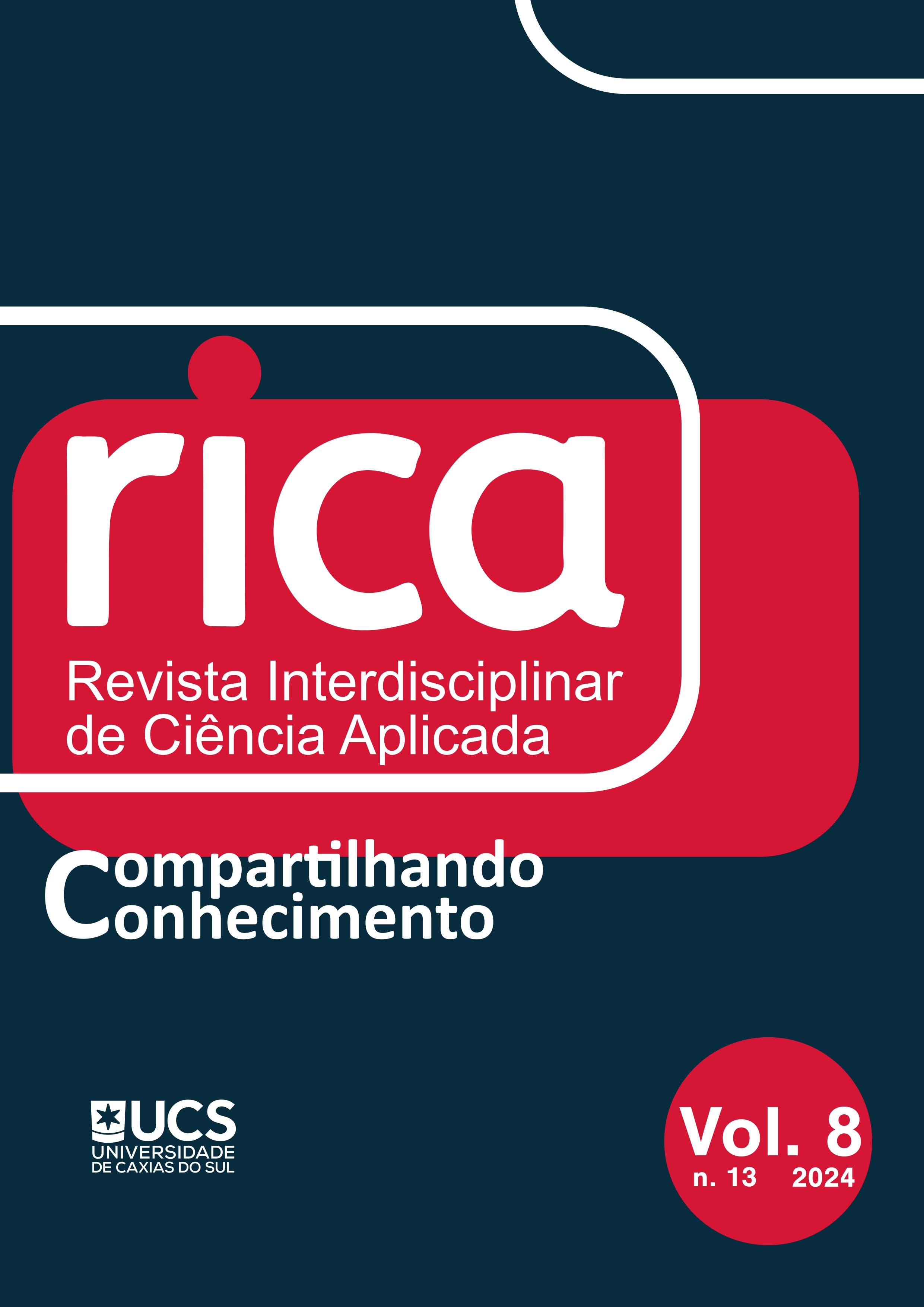The use of superplasticizer for concentrated slurry density control
DOI:
https://doi.org/10.18226/25253824.v8.n13.07Keywords:
Reagent, Hyperplasticiser, Flowability, Cementing process, Well drillingAbstract
Given the constant development of the oil and gas industry and increasing requirements for well drilling efficiency, the study of concentrated slurry density control is critical to ensure drilling processes’ safety and stability and prevent adverse environmental impacts. The study aims to investigate the possibility of using an additive to pure Portland cemented slurry to form high-density concentrated slurry. The mentioned groups are crucial for creating robust cement formulations to line the wellbore at intervals with abnormally high pressure effectively. Laboratory experiments were conducted utilizing various equipment such as the ZM-1003 consistometer, “Sroki” autoclave, “Vicat apparatus,” and AzNII cone. These experiments were based on standard methodologies for analyzing cement slurry and paste properties. During these tests, a particular reagent was introduced, demonstrating the ability to plasticize cement slurries, enhancing their fluidity and enabling precise control over the density of concentrated slurries. The laboratory findings regarding the control of concentrated slurry density were particularly noteworthy. These experiments involved analyzing compositions consisting of pure Portland cement and cement slurries augmented with the hyperplasticizer reagent. The results underscored this additive’s significance in enhancing cement slurry properties, offering improved fluidity and enabling effective density control. This contextualization highlights the pivotal role of the mentioned reagent in optimizing cement formulations for the challenging conditions encountered in well drilling and cementing operations. The added reagent was found to effectively plasticize the pastes, increasing their fluidity and reducing the water-cement ratio, which leads to the formation of paste with increased strength. The results of industrial testing of the reagent during cementing of production string in one of the wells confirmed the possibility of preparing concentrated slurry with a density of 2.4 g/cm³, thus ensuring successful cementing operations under high-pressure conditions. This study provides practical value for well drilling companies and cementing service providers, justifying the use of reagent-hyperplasticiser in concentrated slurries, which opens new perspectives for the creation of high-strength cement slurries when drilling wells, especially in conditions of abnormally high-pressure zones, thus improving cementing technologies and providing more reliable casing slurry strength.
References
[1]Galiev, A.F. & Agzamov, F.A. (2021). Cement-polymer materials for well casing. Kazakhstan Journal for Oil & Gas Industry, 3 (3), 24-32. Retrieved from https://vestnik-ngo.kz/2707-4226/article/view/88854/67036
[2] Loginova, M.E. & Agzamov, F.A. (2022). Viscoelastic systems for well construction. Kazakhstan Journal for Oil & Gas Industry, 4 (1), 60-72. Retrieved from https://vestnik-ngo.kz/2707-4226/article/view/104413
[3] Akhmetzhan, S.Z., Sabitov, A.K. & Nursultanov, E.K. (2022). Horizontal well completion. Bulletin of West Kazakhstan Innovation-Technological University, 23 (3), 209-212. Retrieved from https://wkitu.kz/wp-content/uploads/2023/04/sbornik-3-23-2022-god_.pdf#page=209
[4] Kuliyev, M.Y. (2022). The use of cement mixtures to eliminate absorption during drilling. Innovation in the Oil and Gas Industry, 3 (4), 50-53. Retrieved from https://tadqiqot.uz/index.php/petroleum/article/view/6182
[5] Kabdushev, A.A., Agzamov, F.A., Manapbayev, B.Z., Delikesheva & D.N., Korgasbekov, D.R. (2023). Investigation of impact resistance of grouting materials. Kazakhstan Journal for Oil & Gas Industry, 5 (1), 36-46. Retrieved from https://vestnik-ngo.kz/2707-4226/article/view/108633/ru_RU
[6] Taimasov, B.T. & Kuandykova, A.E. (2022). Current state and prospects for the development of the cement industry of the Republic of Kazakhstan. Scientific Journal “Auezov University”, 1 (1), 21-27. Retrieved from https://auezov.edu.kz/media/attachments/2023/04/26/au01012022.pdf#page=22
[7] Adjei, S., Bageri, B.S., Elkatatny, S. & Adebayo, A. (2021). Effect of perlite particles on barite cement properties. ACS Omega, 6 (7), 4793-4799. Retrieved from https://pubs.acs.org/doi/full/10.1021/acsomega.0c05699
[8] Deryaev, A.R. (2023). Analysis of the opening of zones with abnormally high reservoir pressures in the oil and gas fields of the Western part of Turkmenistan. SOCAR Proceedings: From Reservoirs to Refineries: The Latest Advancements in Petroleum Research, Special Issue 2, 20-25. Retrieved from https://proceedings.socar.az/uploads/pdf/94/020_025_OGP2023SI200871.pdf
[9] Deryaev, A.R. (2023). Well trajectory management and monitoring station position borehole. SOCAR Proceedings: From Reservoirs to Refineries: The Latest Advancements in Petroleum Research, Special Issue 2, 1-6. Retrieved from https://proceedings.socar.az/uploads/pdf/94/001_006_OGP2023SI200870.pdf
[10] Kumar, S., Bera, A. & Shah, S.N. (2022). Potential applications of nanomaterials in oil and gas well cementing: Current status, challenges and prospects. Journal of Petroleum Science and Engineering, 213, 110395. Retrieved from https://www.sciencedirect.com/science/article/abs/pii/S0920410522002819
[11] Beskopylny, A., Stel’makh, S.A., Shcherban’, E.M., Mailyan, L.R. & Meskhi, B. (2022). Nano modifying additive micro silica influence on integral and differential characteristics of vibrocentrifuged concrete. Journal of Building Engineering, 51, 104235. Retrieved from https://www.sciencedirect.com/science/article/abs/pii/S2352710222002480
[12] Arévalo, P.J., Hummes, O. & Forshaw, M. (2021). Integrated real-time simulation in an earth model – Automating drilling and driving efficiency. In: SPE/IADC International Drilling Conference and Exhibition. Richardson: SPE. Retrieved from https://onepetro.org/SPEDC/proceedings-abstract/21DC/3-21DC/460335
[13] Davoodi, S., Al-Shargabi, M., Wood, D.A. & Rukavishnikov, V.S. (2023). Recent advances in polymers as additives for wellbore cementing applications: A review. Fuel, 357 (Part A), 129692. Retrieved from https://www.sciencedirect.com/science/article/abs/pii/S0016236123023062
[14] Fabian, M., Tolnai, I., Kis, Z. & Szilagyi, V. (2022). Characterization of simulated liquid radioactive waste in a new type of cement mixture. ACS Omega, 7 (41), 36108-36116. Retrieved from https://pubs.acs.org/doi/full/10.1021/acsomega.2c05507
[15] Wu, Z., Song, J., Xu, M., Liu, W., Chen, R., Pu, L. & Zhou, S. (2023). Effect of weighting materials on carbonation of oil well cement-based composites under high temperature and CO2-rich environment. Arabian Journal of Chemistry, 16 (5), 104670. Retrieved from https://www.sciencedirect.com/science/article/pii/S1878535223001326
[16] Abdelaal, A. & Elkatatny, S. (2023). Mixed Micromax and hematite-based fly ash geopolymer for heavy-weight well cementing. Scientific Reports, 13, 8669. Retrieved from https://www.nature.com/articles/s41598-023-36010-w
[17] Ahmed, A., Abdelaal, A. & Elkatatny, S. (2023). Evaluation of hematite and Micromax-based cement systems for high-density well cementing. Journal of Petroleum Science and Engineering, 220 (Part B), 111125. Retrieved from https://www.sciencedirect.com/science/article/abs/pii/S0920410522009779
[18] Chen, X., Wang, C., Xue, Y., Chen, Z., Jin, J. & Wang, R. (2021). A novel thermo-thickening viscosity modifying admixture to improve settlement stability of cement slurry under high temperatures. Construction and Building Materials, 295, 123606. Retrieved from https://www.sciencedirect.com/science/article/abs/pii/S0950061821013660
[19] Wang, J. & Xiong, Y. (2021). Research and application of high-density cementing slurry technology under the condition of oil-based drilling fluid in salt formation. Arabian Journal for Science and Engineering, 47, 7069-7079. Retrieved from https://link.springer.com/article/10.1007/s13369-021-06325-9
[20] Wu, Z., Song, J., Liu, W., Zhao, J., Xu, M. & Wang, X. (2022). Study on selection of weighting agent for high-temperature and high-density anticorrosive cement slurry. Drilling Fluid & Completion Fluid, 39 (3), 346-351. Retrieved from http://www.zjyywjy.com.cn/en/article/doi/10.12358/j.issn.1001-5620.2022.03.013
[21] Choudhury, S. & Jena, T. (2023). Influence of surfactant on foam generation and stabilization in cement slurry. Materials Today: Proceedings, 93 (Part 3), 340-345. Retrieved from https://www.sciencedirect.com/science/article/abs/pii/S2214785323041299
[22] Abdelaal, A.E. & Elkatatny, S.M. (2023). High density geopolymers: A step forward towards low carbon footprint cementing operations. In: Offshore Technology Conference. Houston: OTC. Retrieved from https://onepetro.org/OTCONF/proceedings-abstract/23OTC/2-23OTC/519143
Downloads
Published
How to Cite
Issue
Section
License
Copyright (c) 2024 Annaguly Deryaev

This work is licensed under a Creative Commons Attribution 4.0 International License.
Authors keep the copyright and cede to the journal the right of publishing first. Published works are licensed under a Creative Commons Attribution 4.0 International (CC BY 4.0) license, allowing the sharing of the work with recognition of the authorship and initial publication in this journal.






